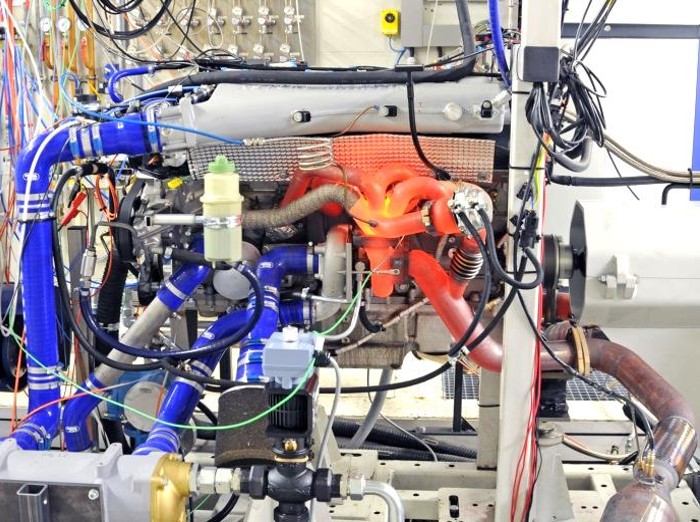Hydrogen Race Engine
On the occasion of the company's 100th anniversary, a vehicle of the English sports car manufacturer Aston martin was converted for bivalent operation with gasoline and hydrogen. The aim was to use this vehicle in a 24-hour race, to demonstrate the suitability of the concept under extreme conditions and thus to complete as many laps without CO2 emissions as possible.
The project was started in September 2012. Until the 24h race at the Nürburgring on May 20, 2013, a competitive vehicle should be ready for use. According to the regulations of this race, the registration of the vehicle requires participation in two 4h races before the 24h race. The 4h races took place in April 2013, which is why the vehicle had to be operational at the beginning of April and therefore 6 months after the project started.

As known, operation with hydrogen requires an efficient safety system to monitor potential accumulations of ignitable gas mixtures in the area of the vehicle and, if necessary, to take countermeasures. The heart of the security system is the Alset H2-ECU. This control unit is solely responsible for the hydrogen supply of the Aston Martin. The functionality can be roughly divided into the two groups controlling the H2 supply as well as the continuous monitoring of the system state.

Based on known geometric engine data and the desired power level, a 1D charge cycle simulation was performed. Operation with gaseous fuel has a large impact on the intake flow rate. In addition, the low exhaust gas enthalpy in hydrogen operation leads to completely different boundary conditions for the turbocharger matching. In order to ensure an acceptable power delivery for both fuels, compromises had to be made in the choice of turbocharger size.
The figure below shows the most important engine parameters that were achieved in pure hydrogen or pure gasoline operation. It should be noted that the maximum power - due to regulations - had to be limited to 410 kW. The maximum torque was limited to 800 Nm for the protection of the manual gearbox and for reasons of driveability, although in the lower speed range still significant potential was present.
In hydrogen mode (quality control), a power of 303 kW could be stably achieved. Noticeable is the reduced maximum torque of 610 Nm, which was only achieved at 4500 rpm. This is mainly due to the fact that stoichiometric operation is not possible due to the high tendency to re-ignite (λ ≈ 1.6) and furthermore the mixture calorific value in hydrogen mode is significantly lower than in petrol mode.
